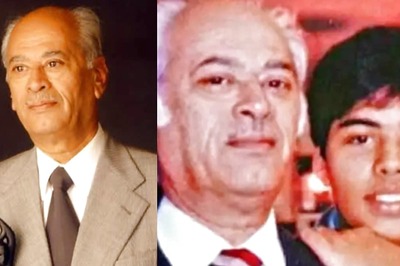
views
New Delhi: The suicide bombing attempt at Glasgow Airport on June 30 may have failed because the device used by suspected suicide bomber Kafeel Ahmed was based on an untested design which the UK-trained aeronautical engineer appeared to have picked from the Internet, an Indian newspaper claimed on Saturday.
Citing materials discovered by the Indian investigators on Ahmed's computer, which was found in his Bangalore home, The Hindu said Kafeel had downloaded hundreds of bomb designs from the Internet. A manual on how to cause such explosions was also found on Kafeel’s hard disk.
Based on a study of the designs, Indian investigators have come to the conclusion that Kafeel had designed the device by linking a household fuel-gas cylinder to a plastic medical syringe filled with potassium chloride.
A bulb sealed inside the syringe was, in turn, wired to a mobile phone in such a way that when someone called the mobile phone, the electrical current delivered to its ringer would heat up the bulb and it would initiate the combustion of potassium chloride.
But, it appears, the electrical current delivered to the bulb proved inadequate to set off an explosion and the terror attempt came a cropper.
The Hindu quoted police sources as claiming that the untested bomb design used in the terror plot also suggests that Kafeel had no contact with any trained terrorists. "Or else, they would have informed him that the devices, though theoretically robust, were unlikely to work in real-world conditions," the report says.
The police are now trying to find out whether Kafeel conducted a 'dry run' in Bangalore for the medical syringe-trigger technology that he used in the failed London and Glasgow attacks.
Kafeel’s computer has also produced hundreds of pictures of European buildings and cities. He also had several pictures of streets and locations of Palestine.
Bangalore-born Kafeel Ahmed, 27, later suffered third degree burns over 90 per cent of his body when he set himself on fire following an attempt to ram a Jeep into Glasgow airport. He is still undergoing treatment at a UK hospital and doctors attending on him now say he is unlikely to live.
"Statistically, he is not likely to live," said Dr Joseph Feldman, chairman of emergency medicine at Hackensack University Medical Centre in New Jersey, who is not connected to Ahmed's treatment. Kafeel is heavily sedated and likely to suffer organ failure, a member of his medical team said. The doctor, who demanded anonymity because he is not authorised to discuss the suspect's condition, said severe burns have left the suspect vulnerable to infection.
This also means that the investigators probing the failed bomb attacks in Britain will not be able to question or charge the Indian-born aeronautical engineer in the foreseeable future.
Kafeel's Internet and travel records also do not substantiate the media reports that he had travelled to West Asia at any point of time. Bangalore police, however, say Kafeel did travel a lot in South India and went to China. He used a Bangalore-based political platform called Discover Islam to draw educated young Muslims to the causes he supported, The Hindu reported.
Kafeel is believed to using an Islamic centre called Dar-us-Salaam, with a library, auditorium and book shop, as a hub for the sleeper cell that he had set up. He had also published thousands of pamphlets to publicise the meetings which were held to discuss Islamist politics but they drew few people.




















Comments
0 comment